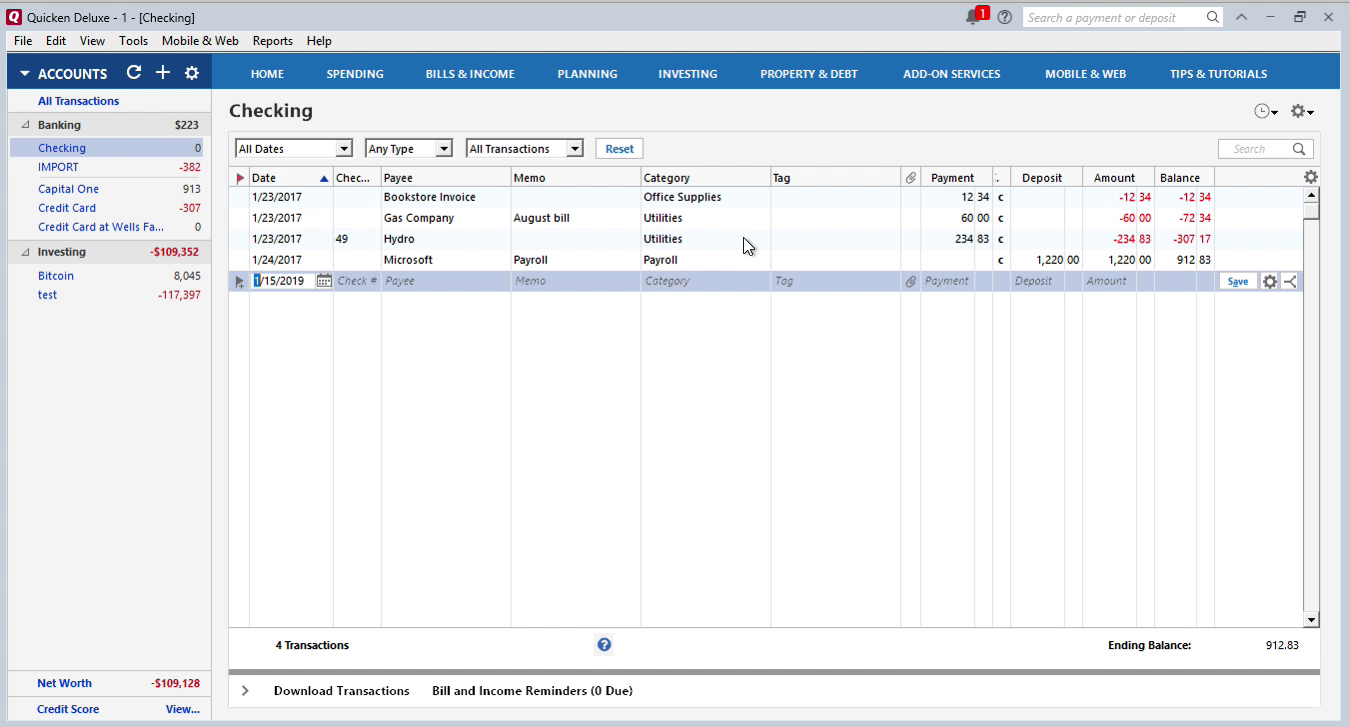

- #CREATE QUICKEN QIF FILE PASSWORD#
- #CREATE QUICKEN QIF FILE DOWNLOAD#
- #CREATE QUICKEN QIF FILE FREE#
- #CREATE QUICKEN QIF FILE WINDOWS#
If your newconverter produces OFX files that give a different FITID than the old one, expect duplicates if the dates overlap. OFX files use a financial institution transaction ID (FITID) which needs to be unique.

So if you buy a cup of coffee with your debit card, and get another later that day at the same price, Money will only recognize one transaction. That is true,Įven if the transactions are in the same QIF file. Money presumes that if a QIF statement has the same amount and same date and same payee, they are the same transaction. Mainly the duplicate transaction method is less sophisticated. QIF statements work similarly to OFX, with some differences. Quicken automatically adds the correct file extension. Select the appropriate option: Enter a name for the export file at the end of the existing path (make sure there is a backslash \ before the file name). In the QIF File to Export to field, Quicken displays the preset path of the export file. He has provided useful help here in the past.Īlso, I see some CSV to QIF tools listed here: Choose File menu > File Export > QIF file. If you have a problem with one of the hle tools, you might post that here. Maybe something discussed on this thread will be worth revisiting:
#CREATE QUICKEN QIF FILE DOWNLOAD#
But many banks offer the ability to download transactionsĮDIT. Brokers and credit cards often do that, and only a few banks do.
#CREATE QUICKEN QIF FILE FREE#
I use a free program called PocketSense to get transactions from my financial institutions that have an OFX/QFX server into Money. Another still is to type the path/name of the QIF file in a command window.
#CREATE QUICKEN QIF FILE WINDOWS#
Another is to select the *.QIF file in Windows Explorer, and either double-click it or right-clickĪnd choose open. One way in Money is to click File->Import->Statements or similar wording. Repeat steps 3 through 8 for all the Quicken accounts you want to import and you’re ready for the next step: Your first reconciliation.If you can create a *.qif file, Money can bring that in. Click the Continue button and your Quicken transactions will now appear as Entries in your CheckBook Account. CheckBook will ask if it’s OK to continue. When you’re ready to continue, click the OK button at the bottom right corner of the window. Quicken will only export certain data, so if a column is empty that’s just because the data for that column wasn’t in the QIF or QMTF file.
#CREATE QUICKEN QIF FILE PASSWORD#
You can set up a password for every Quicken file you create.

Your Quicken Essentials accounts will appear in a brand new CheckBook document, ready for you to get to work.


 0 kommentar(er)
0 kommentar(er)
